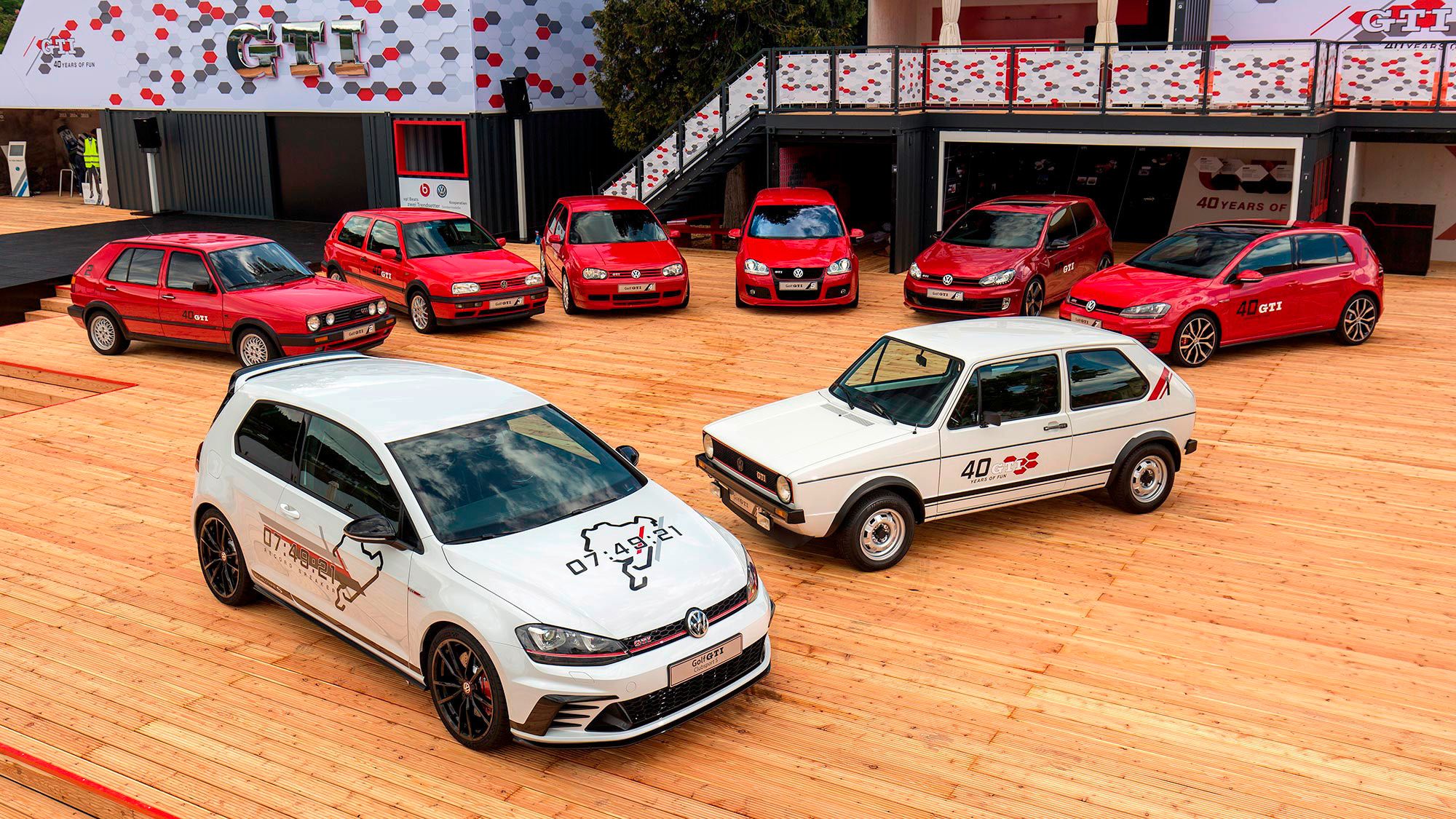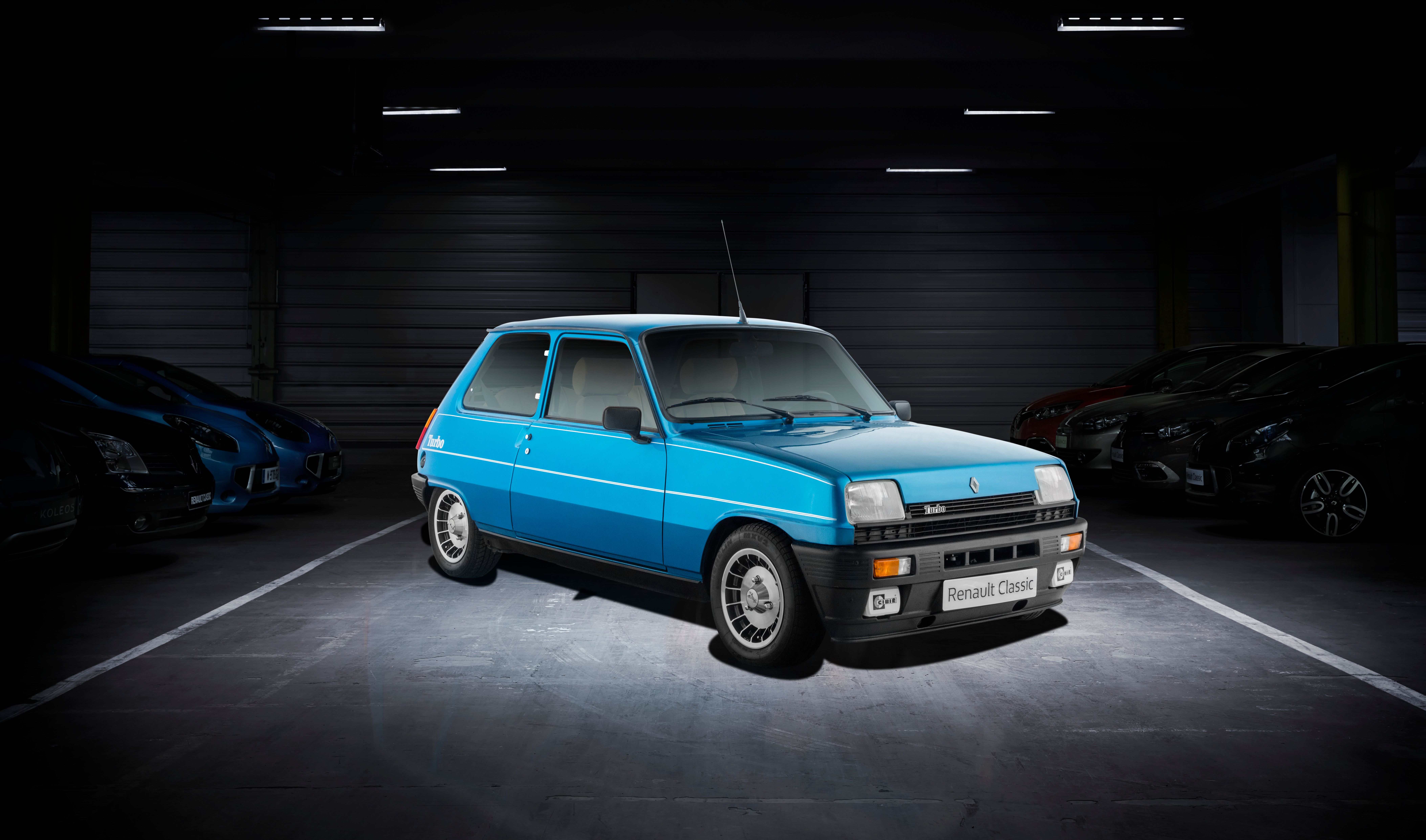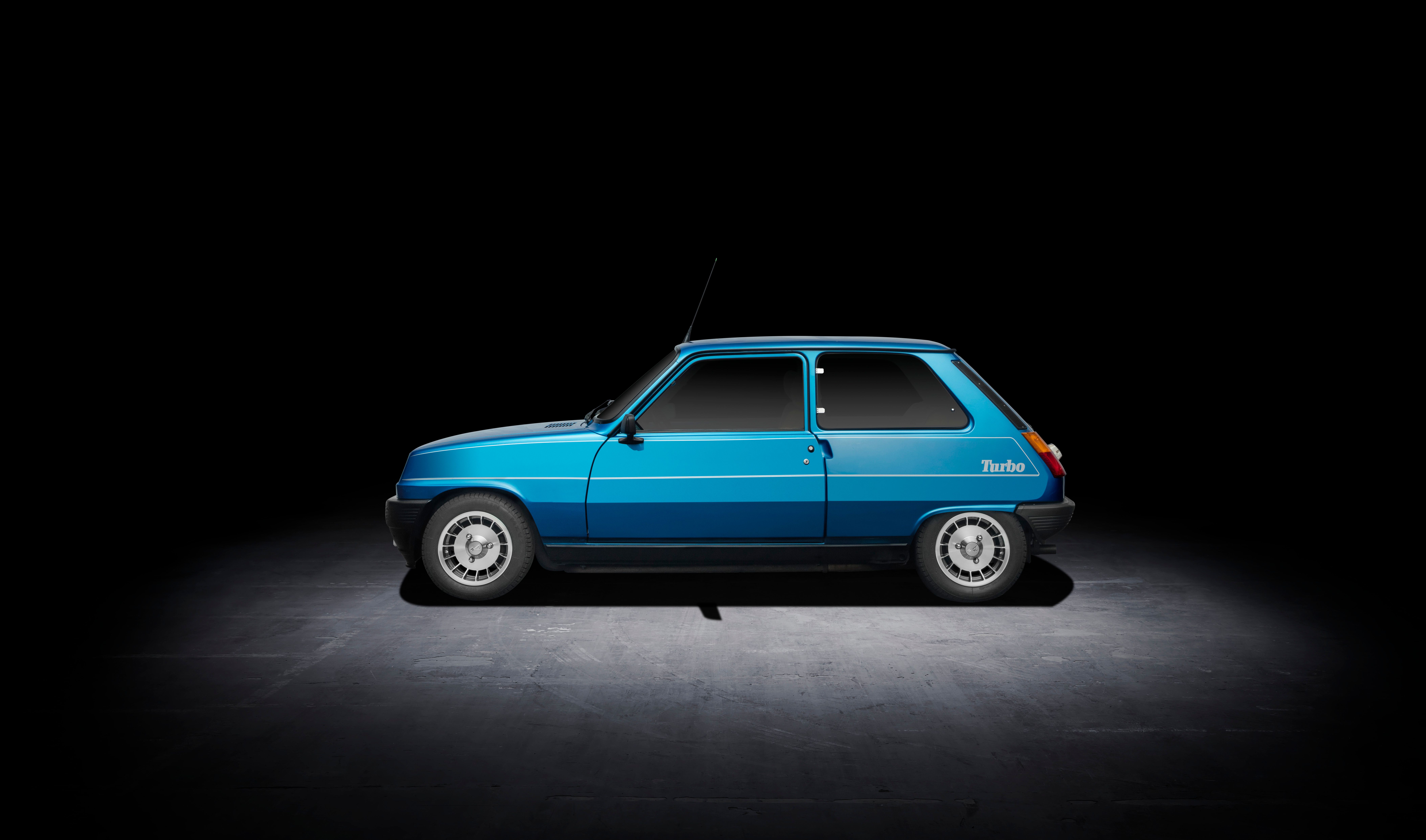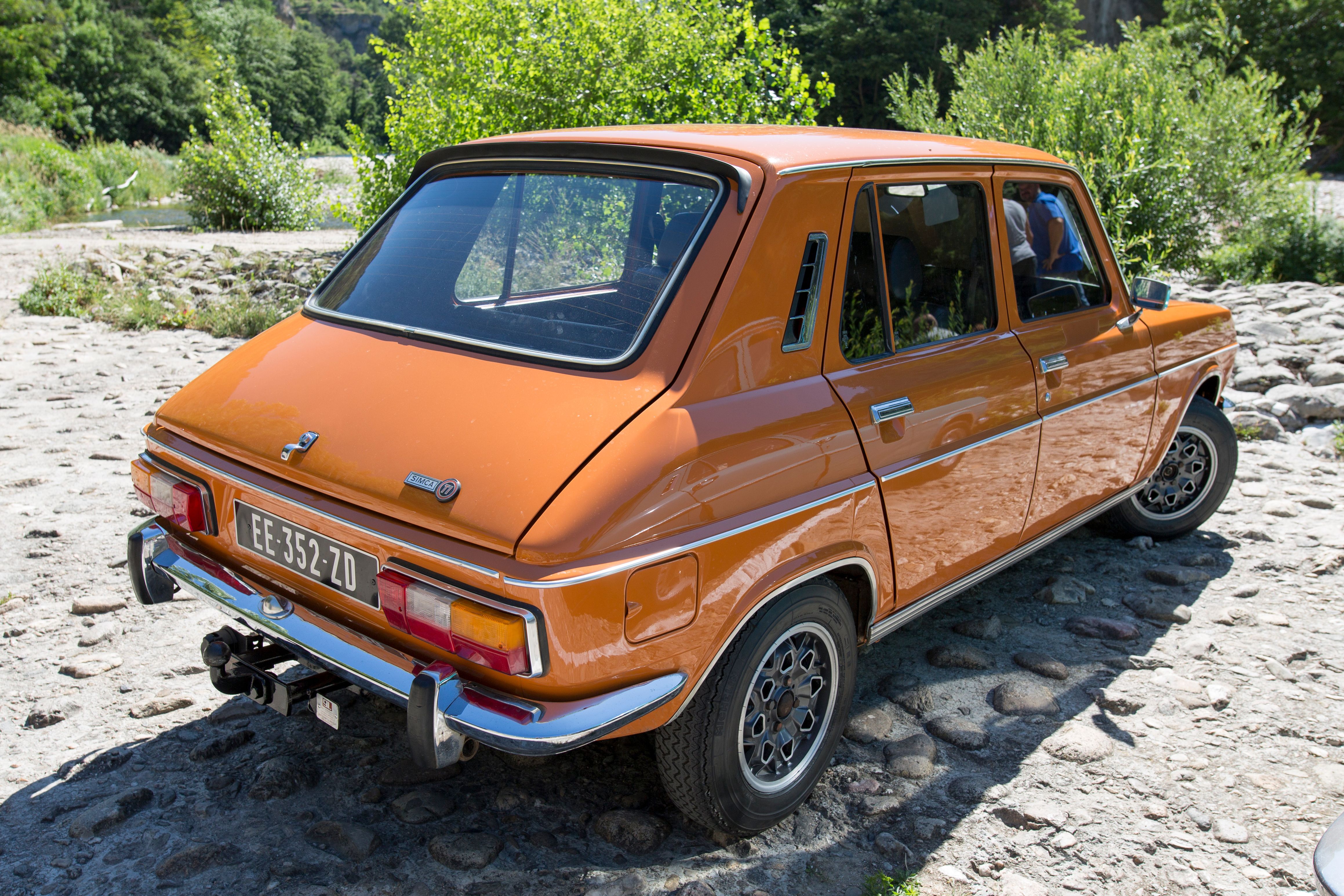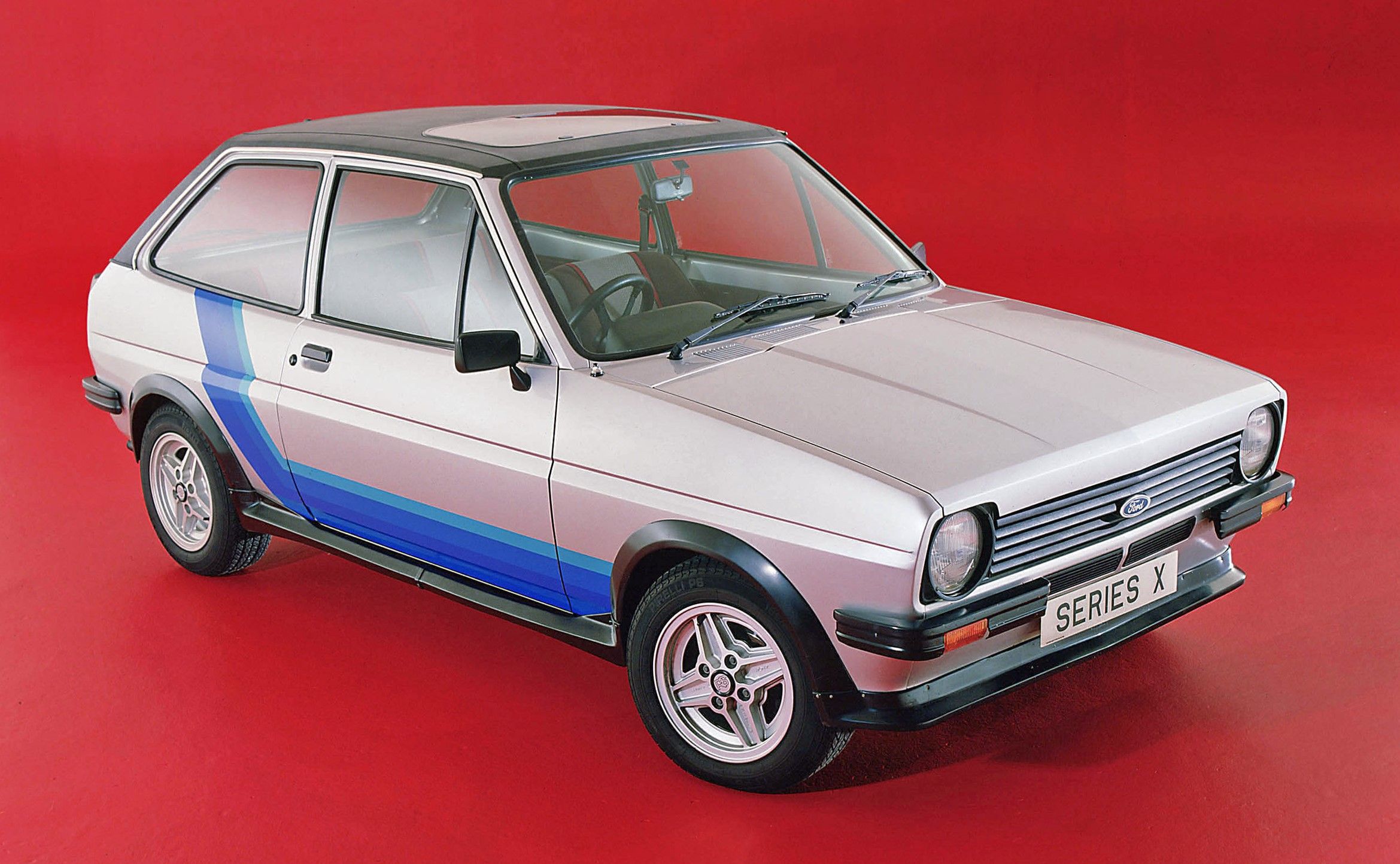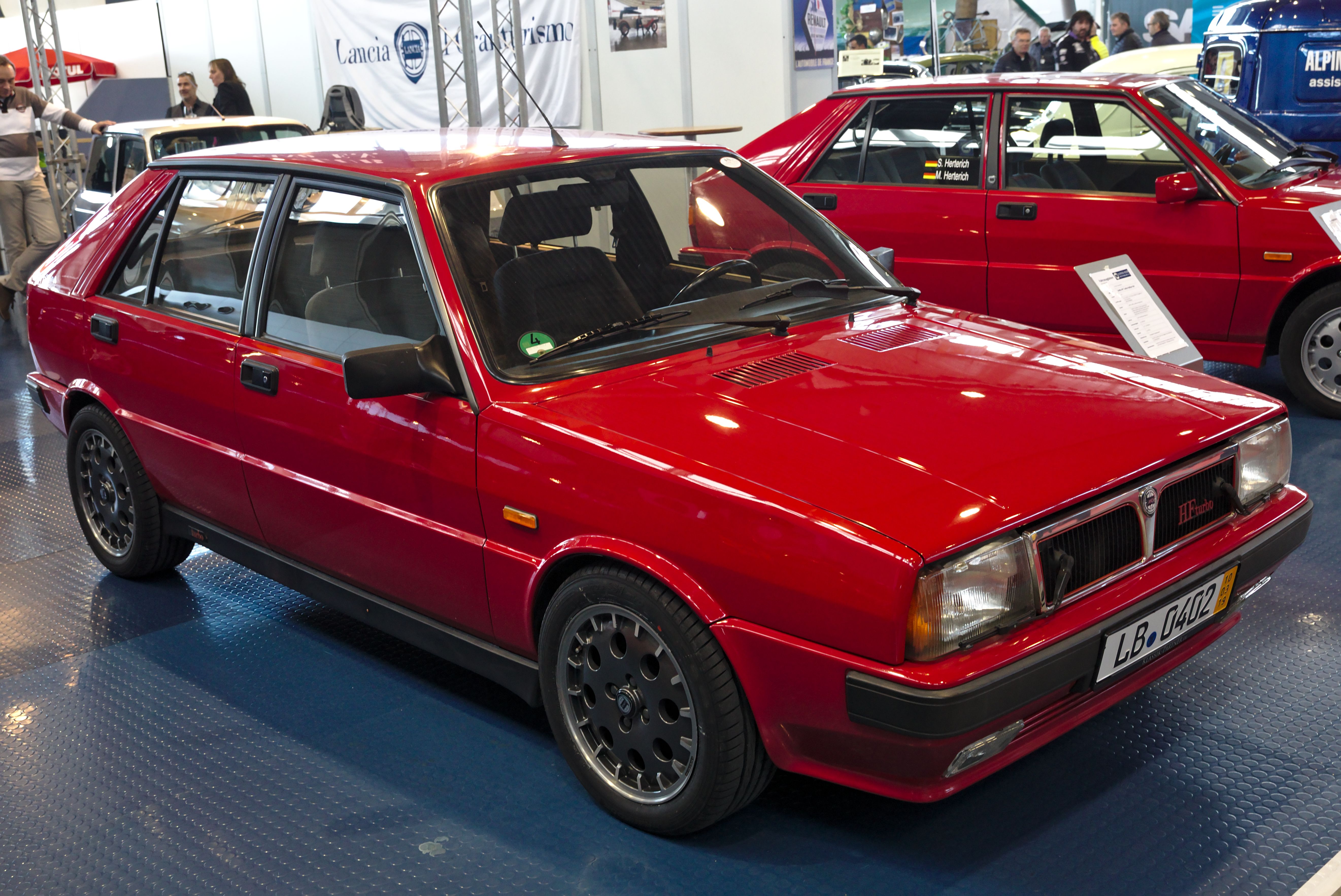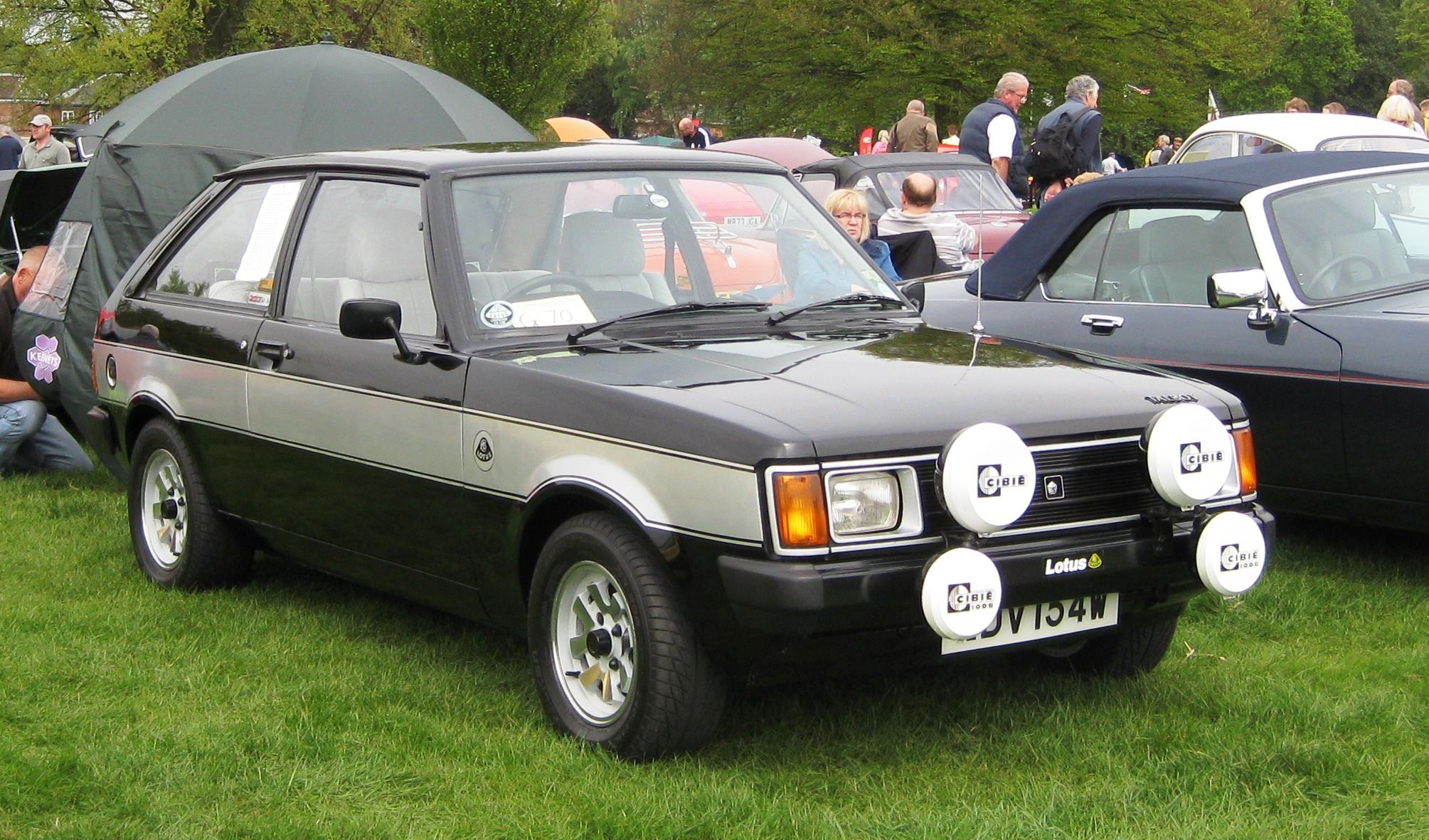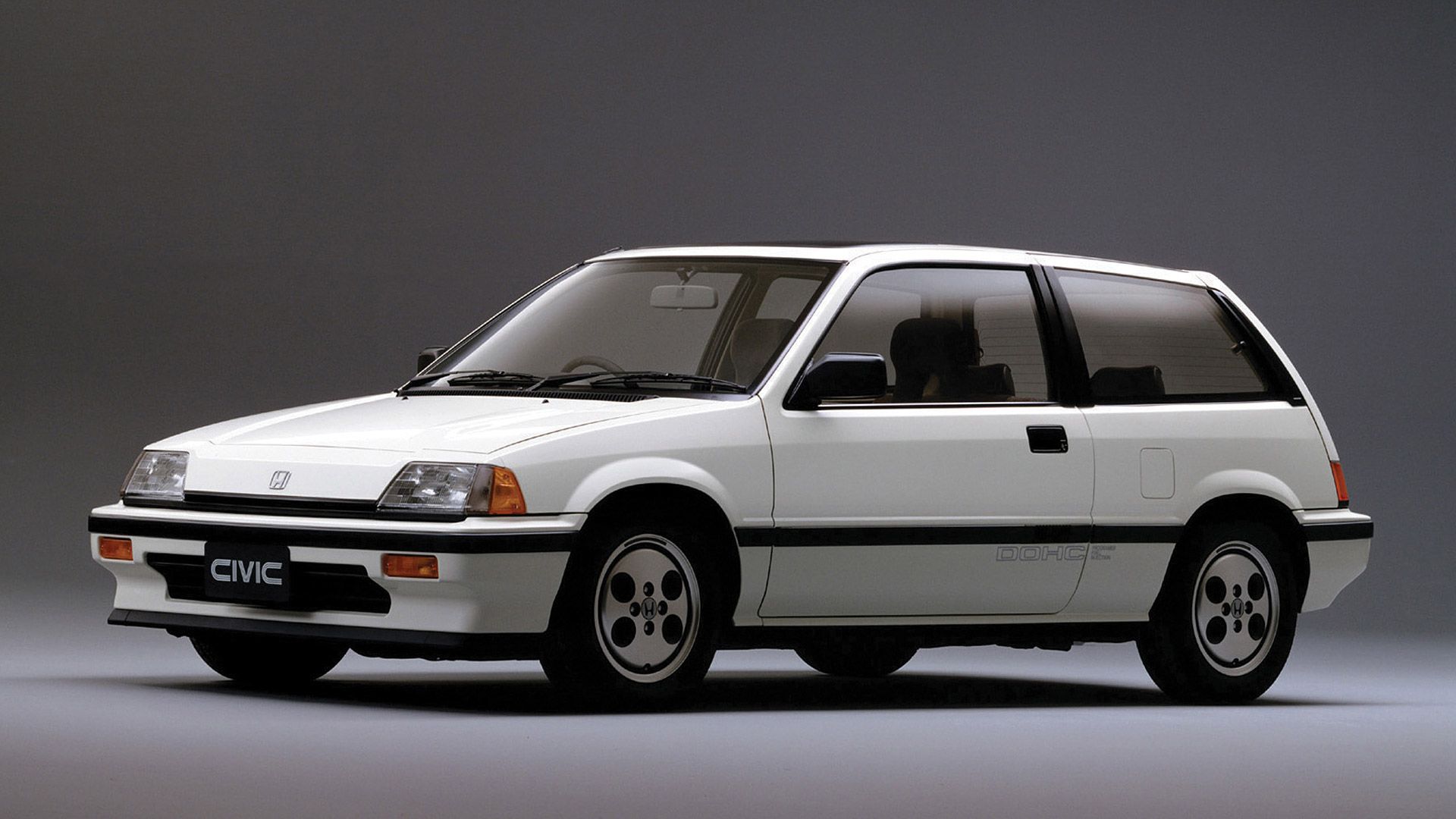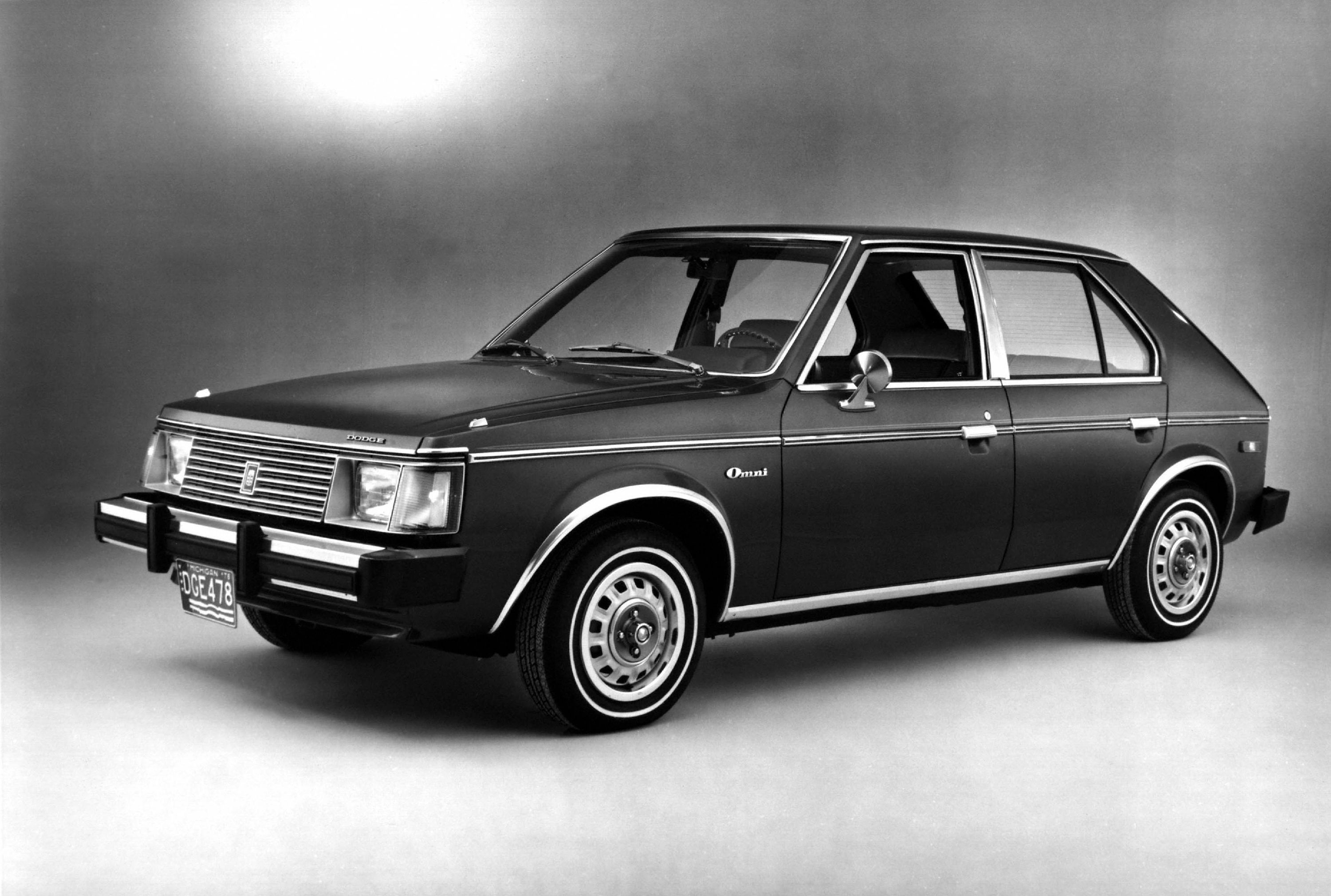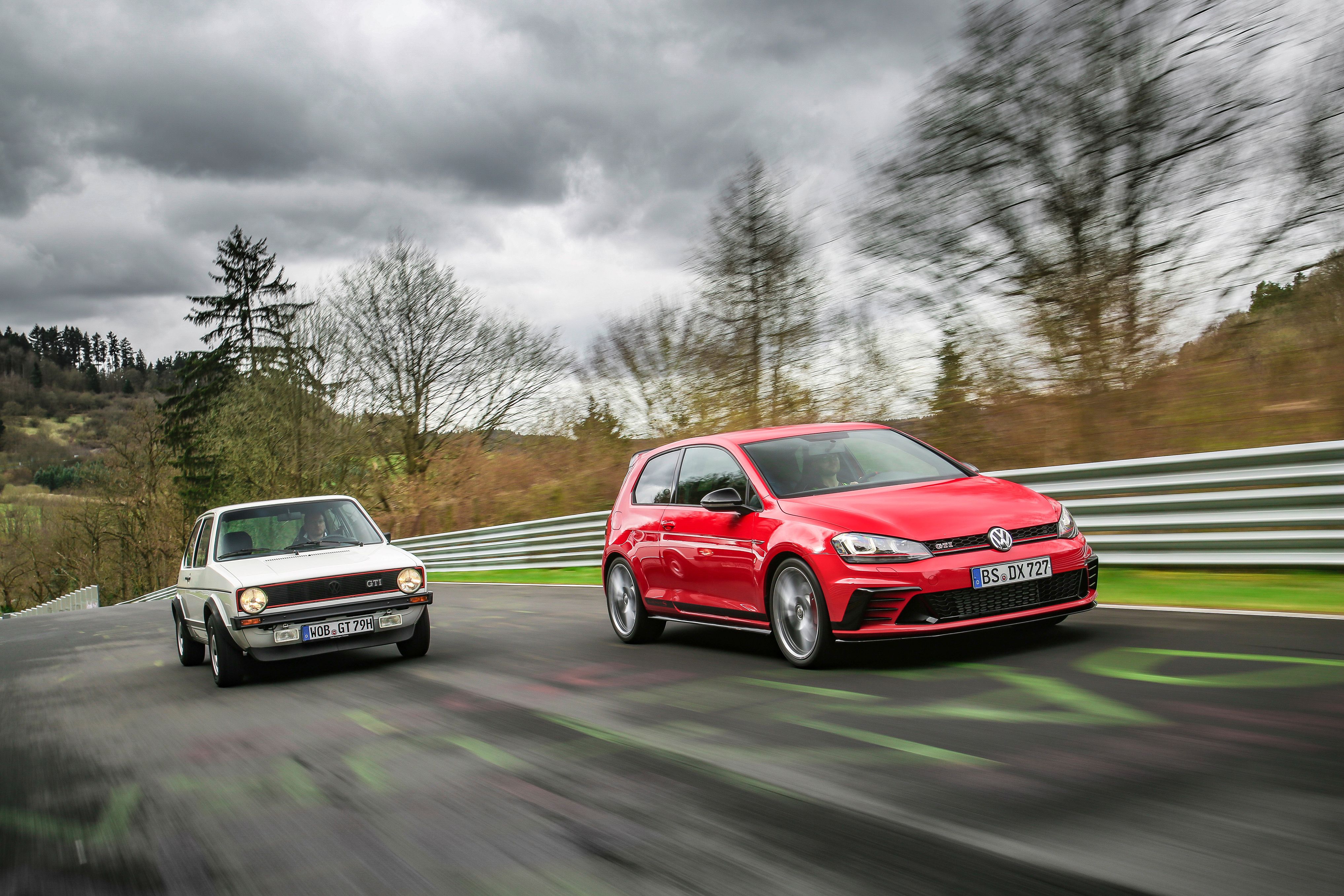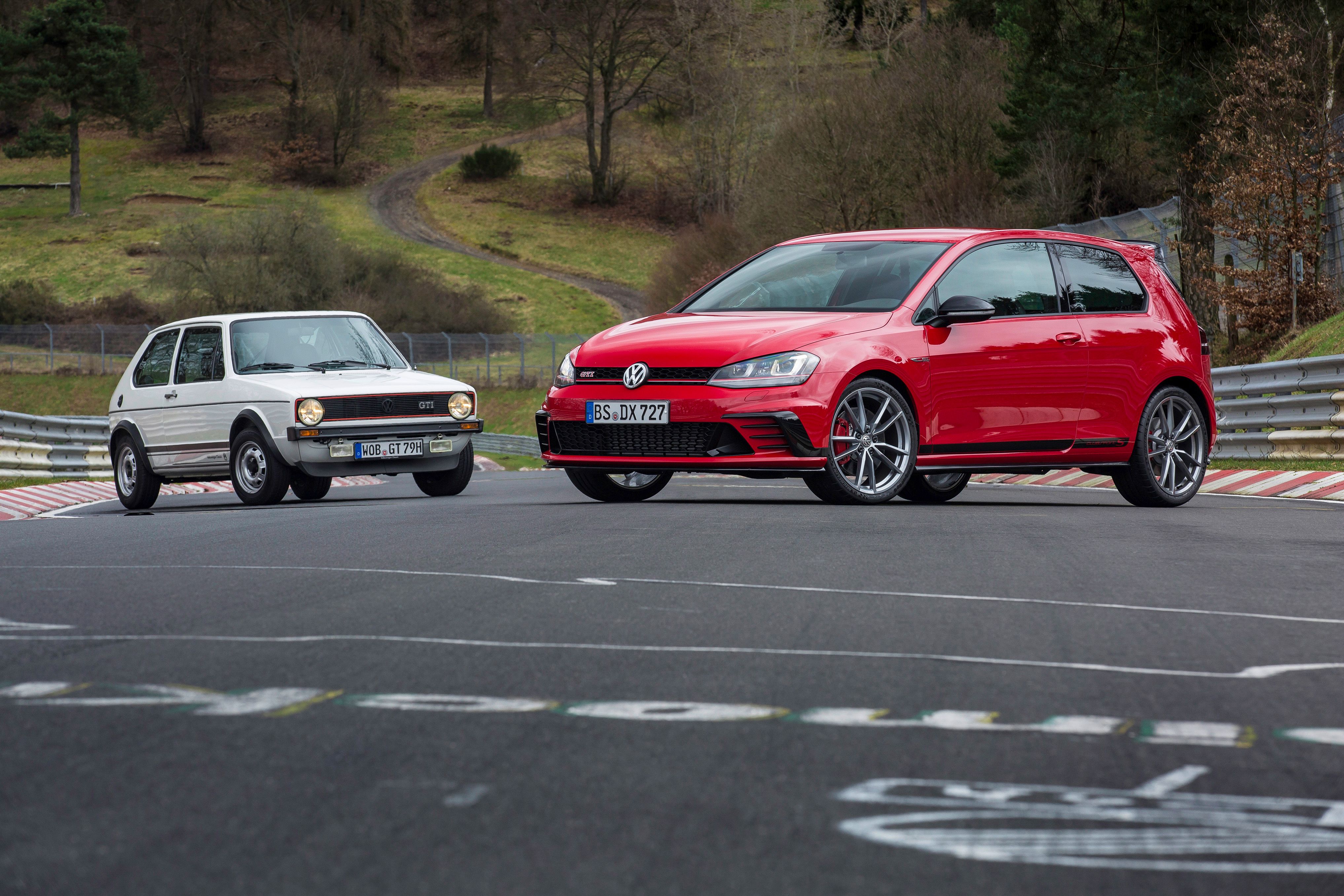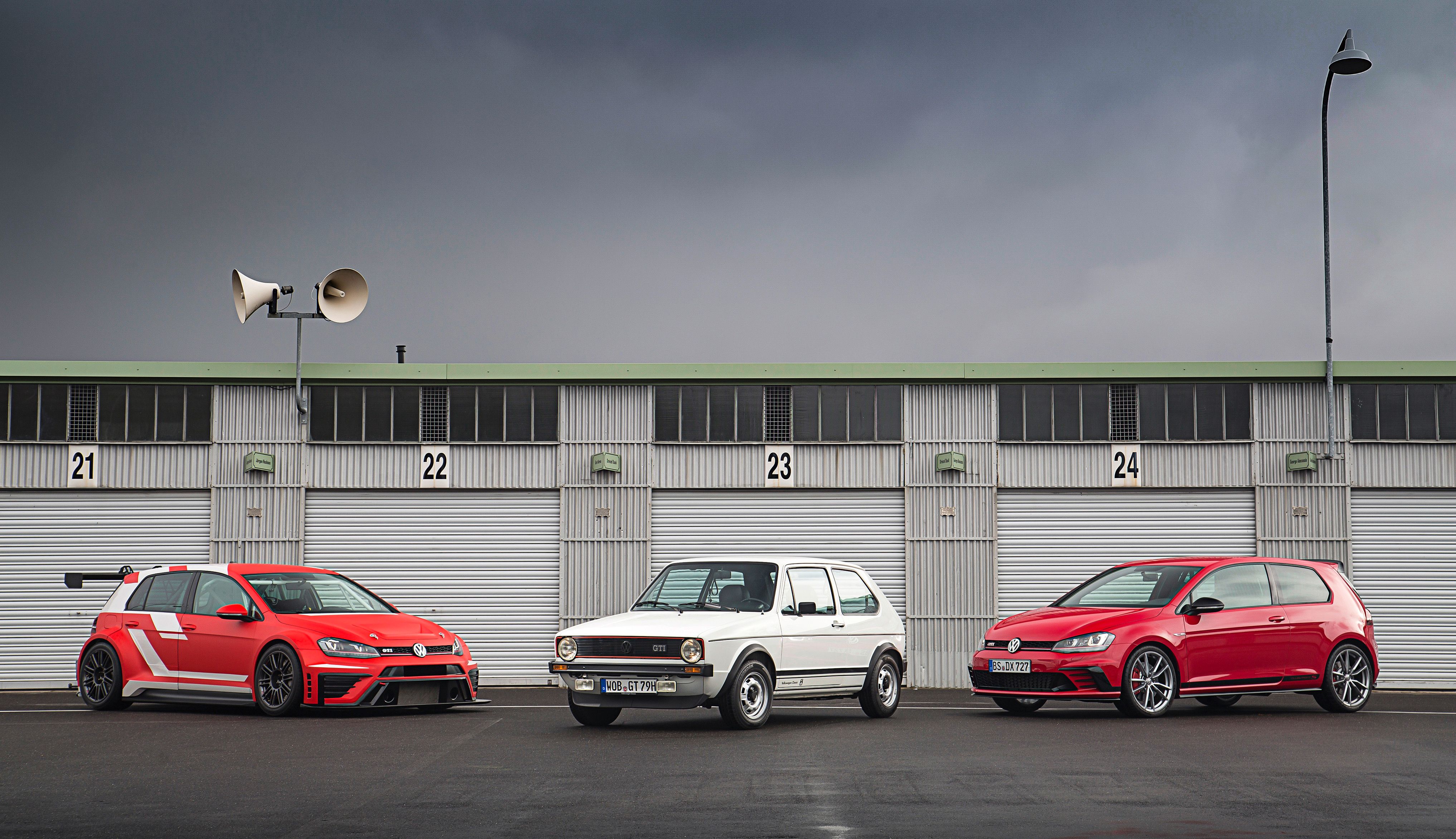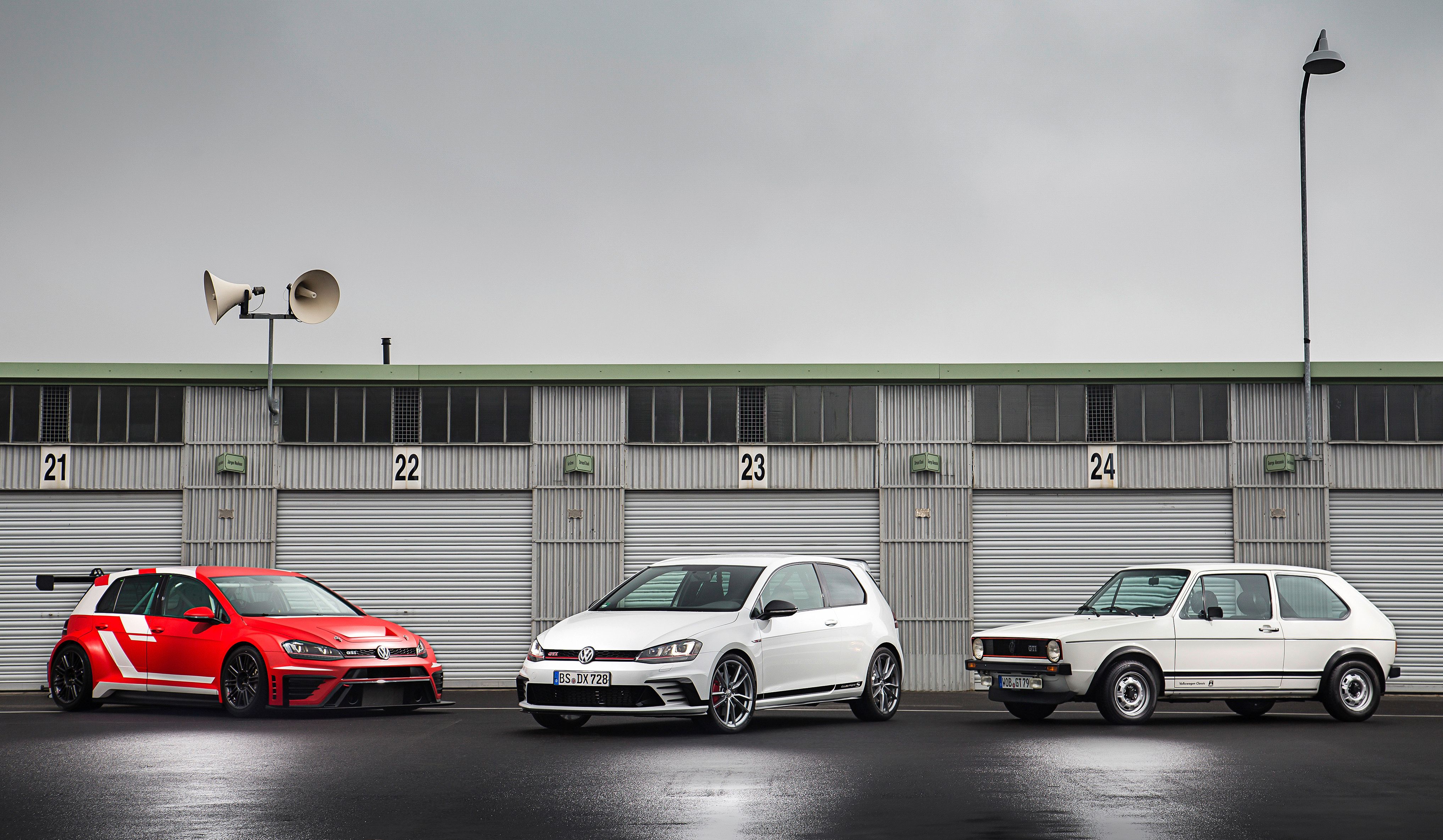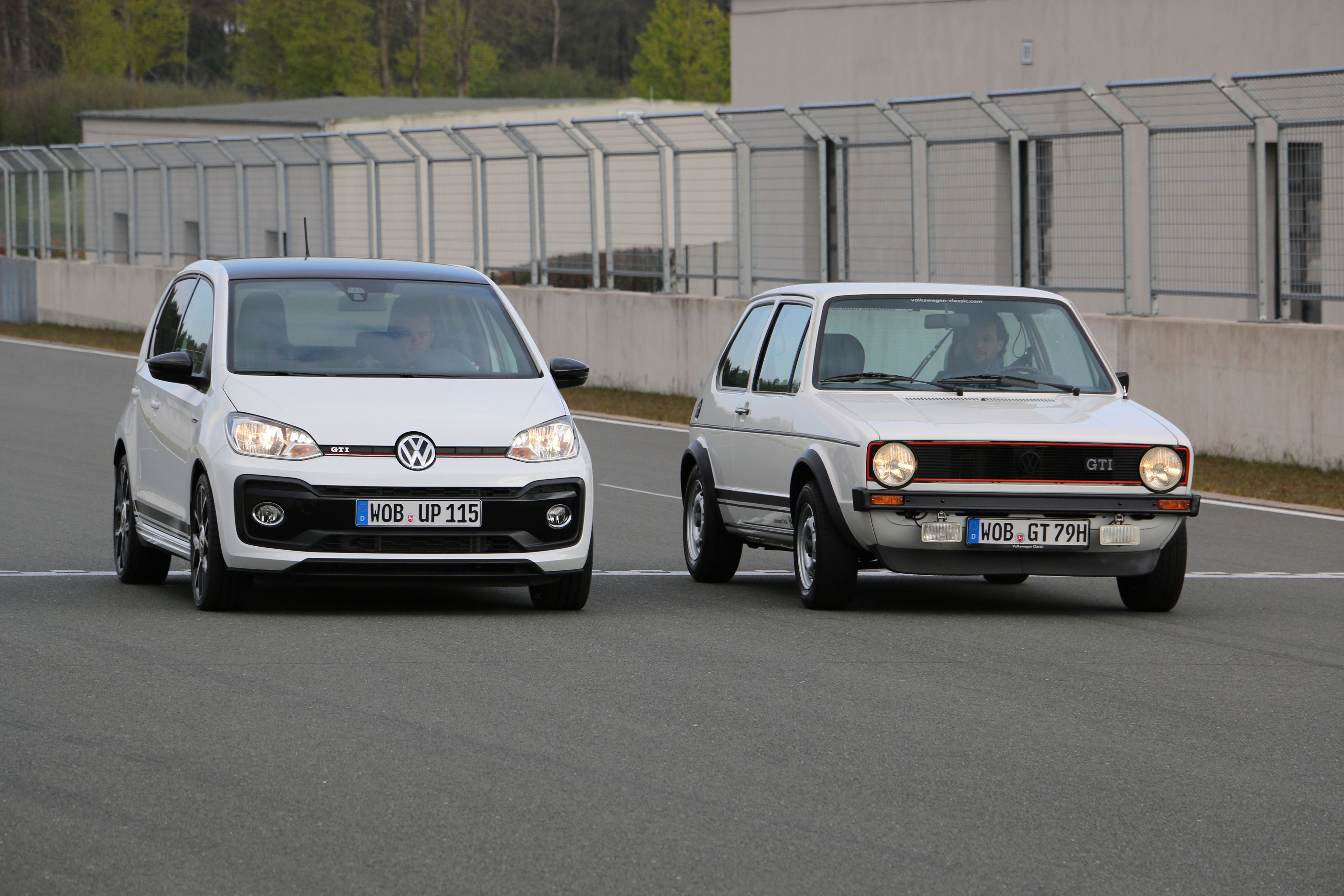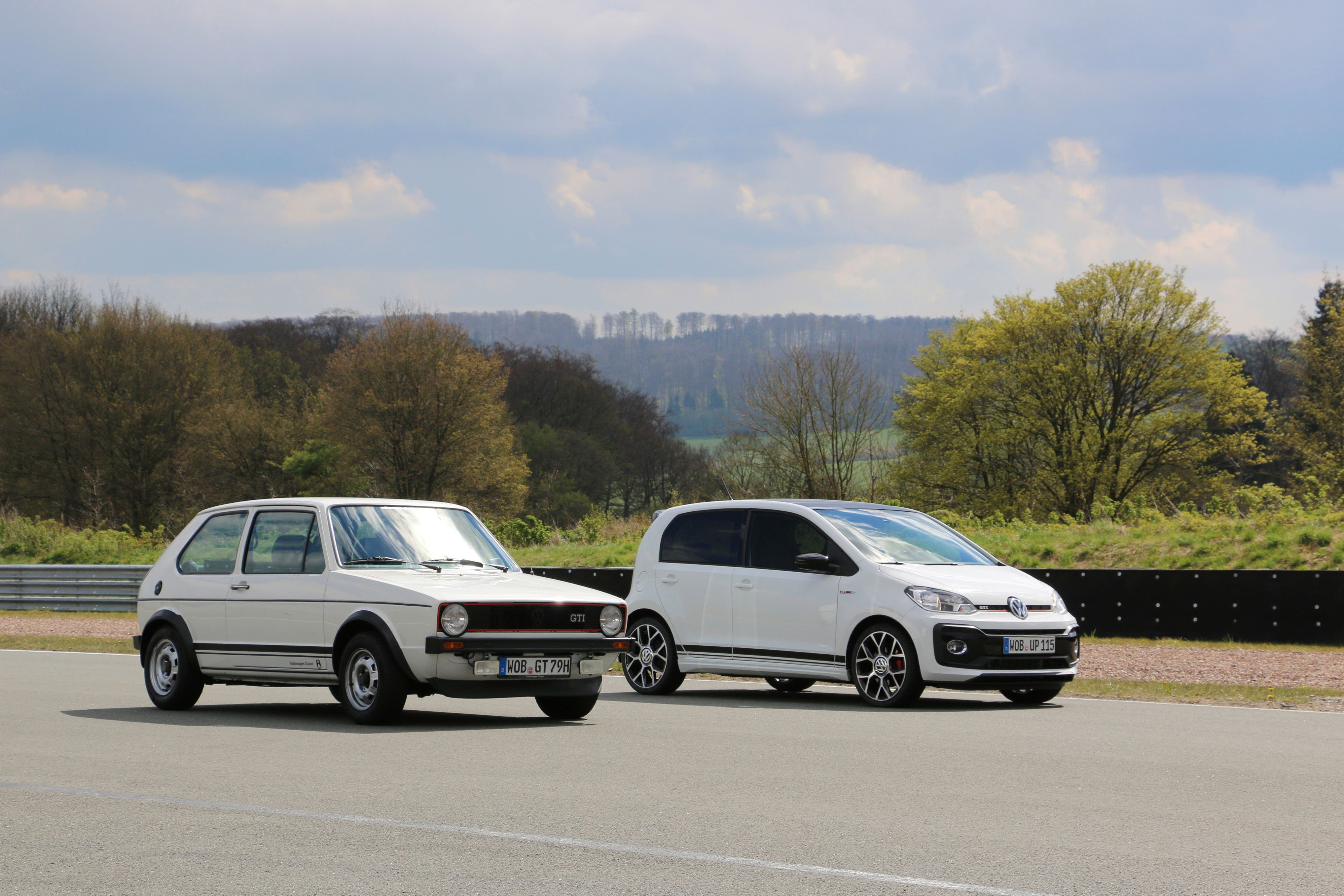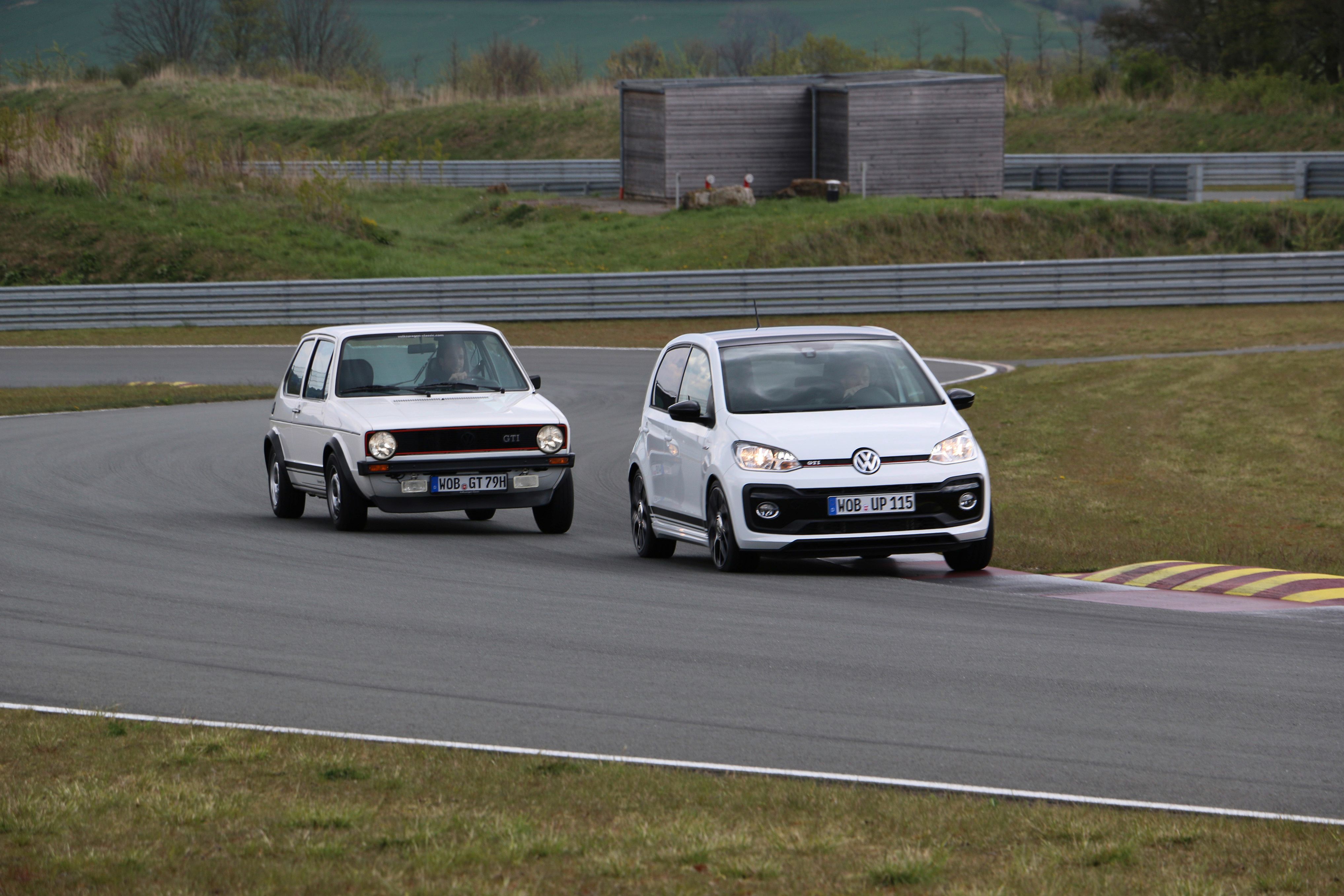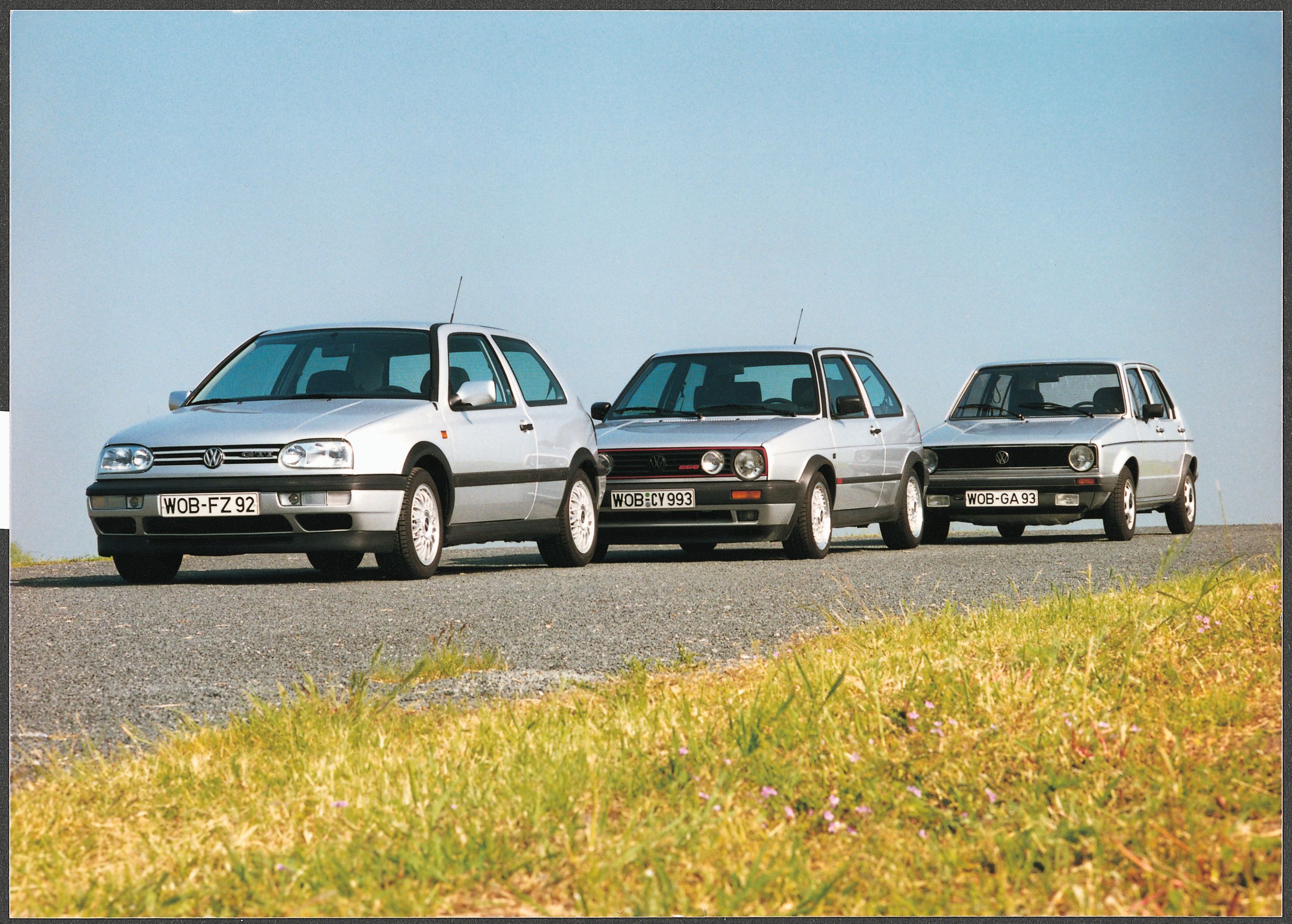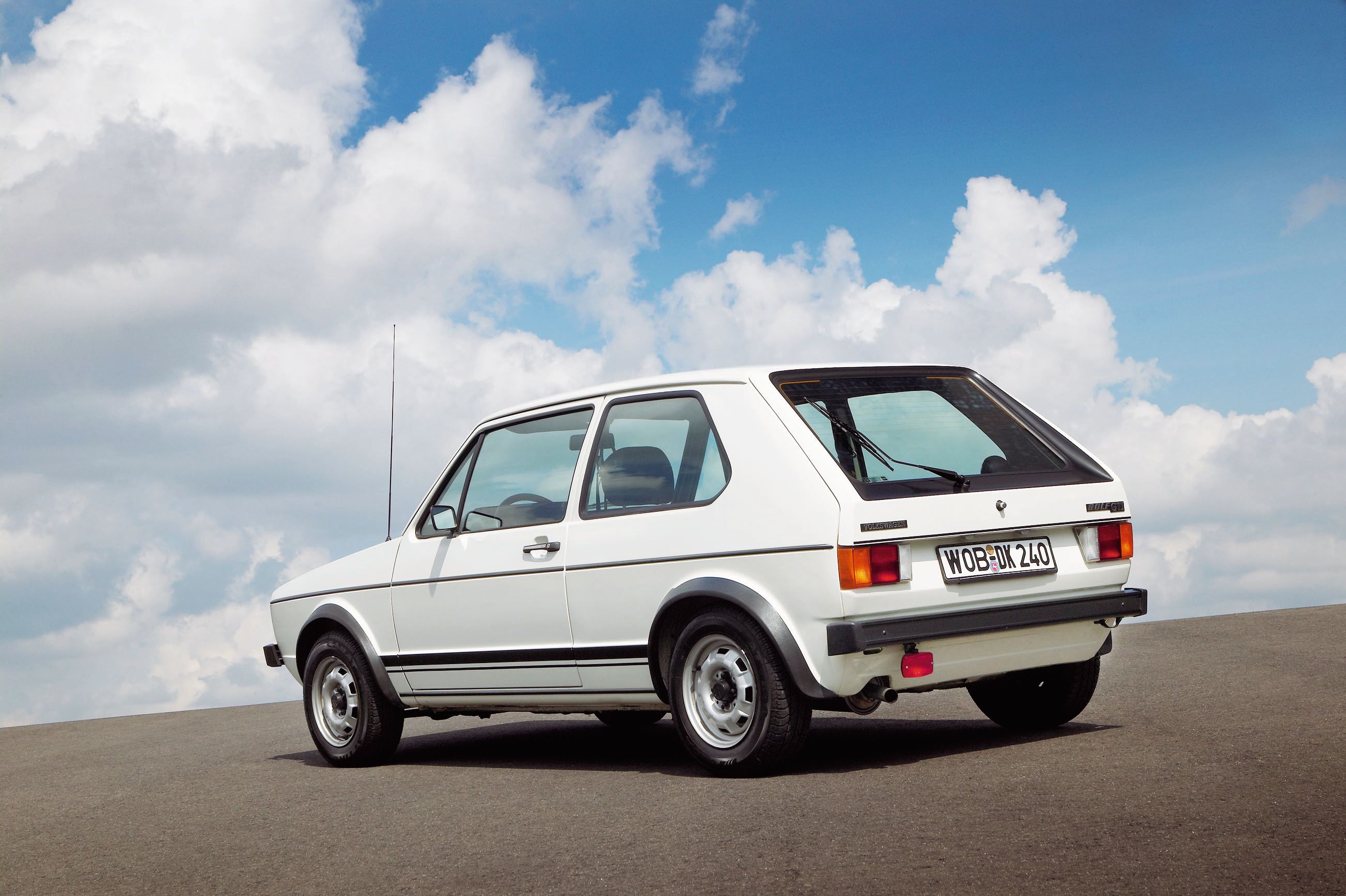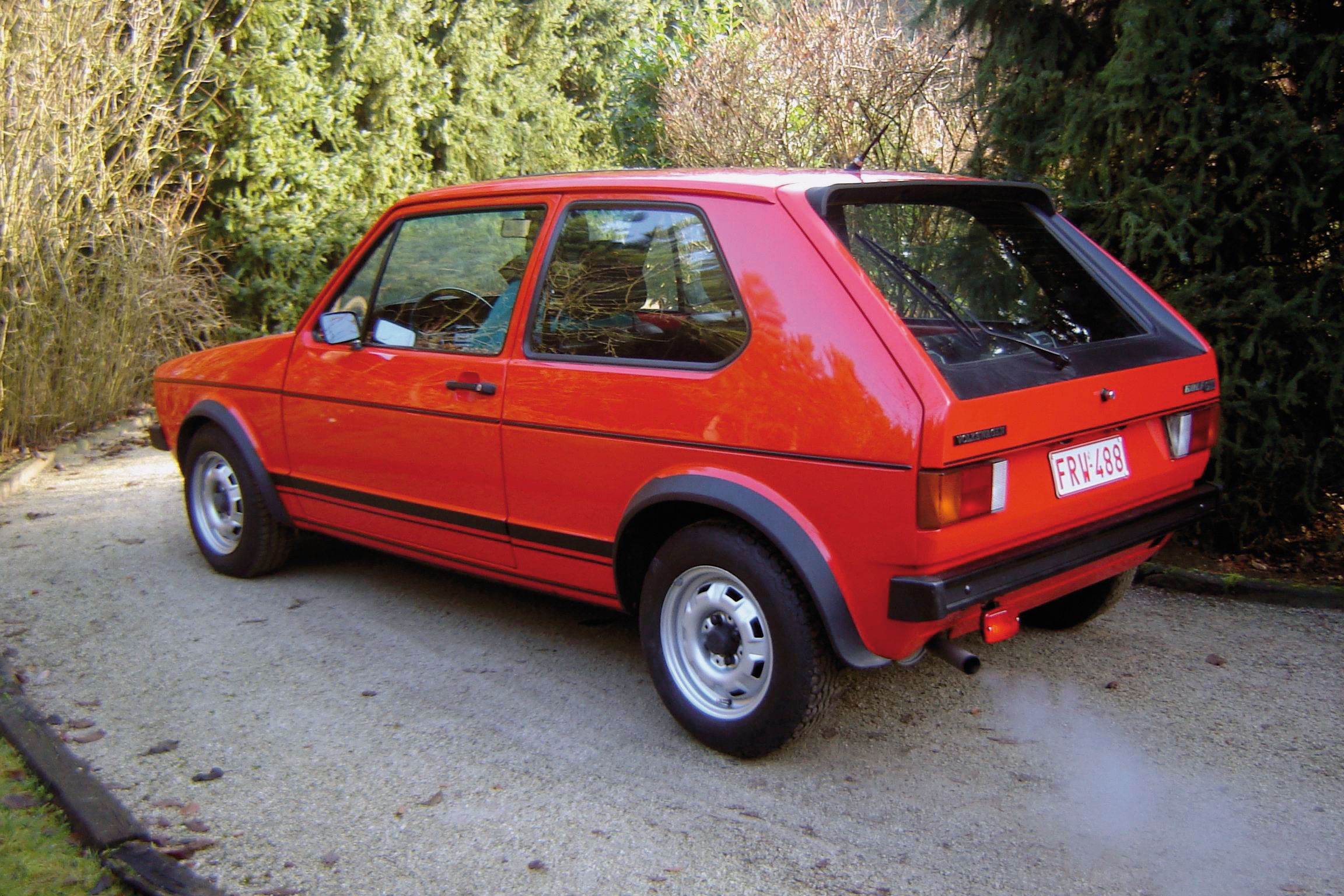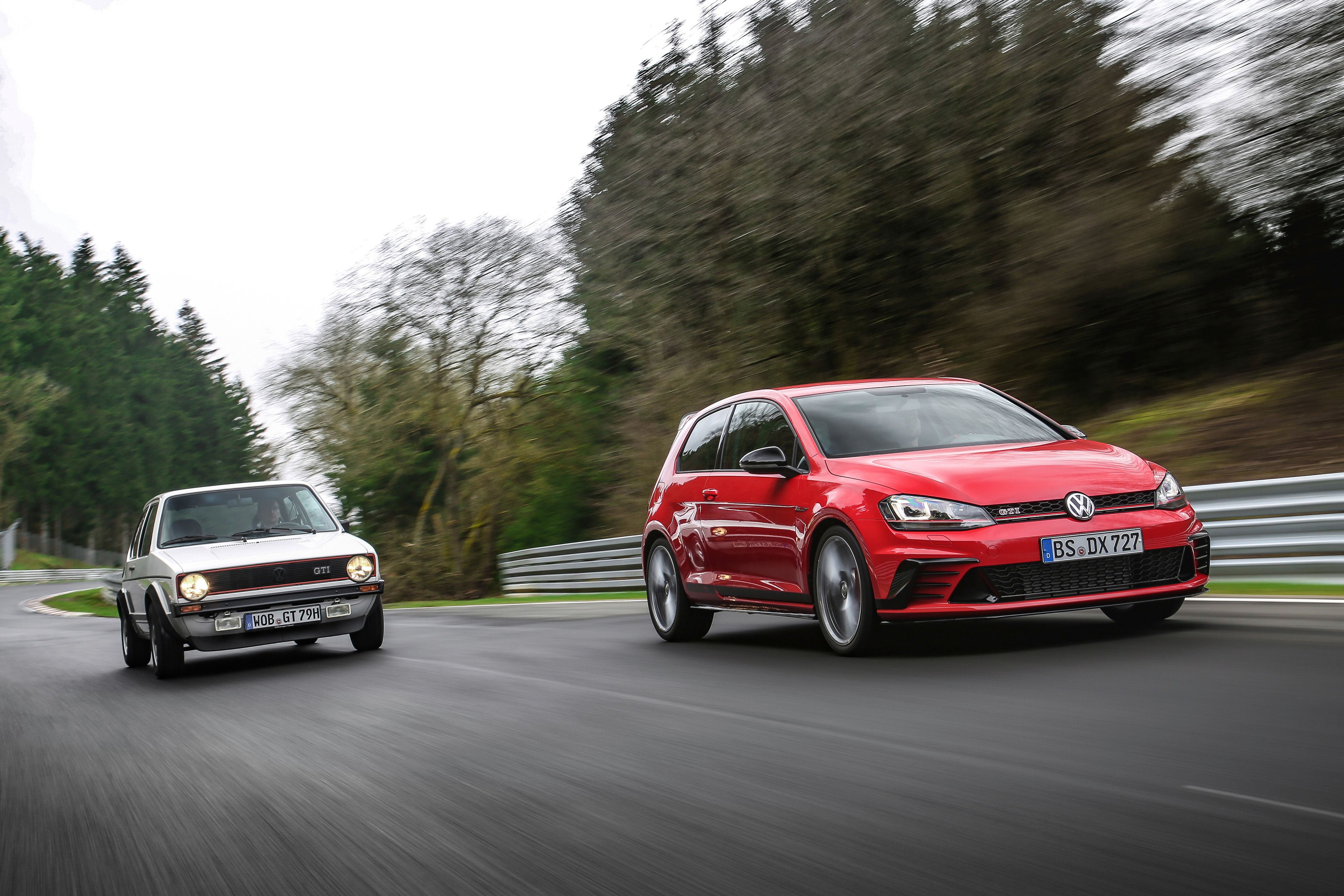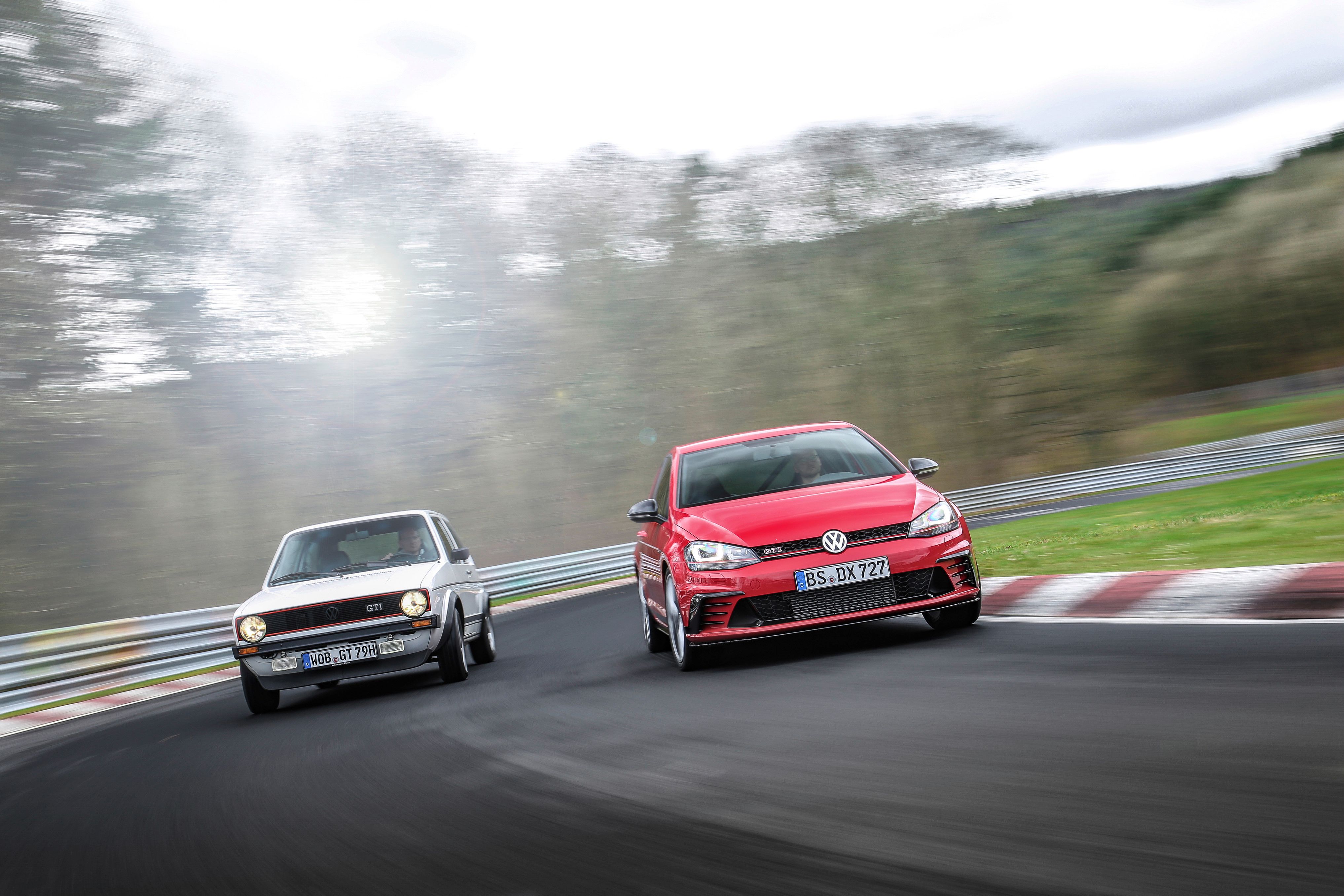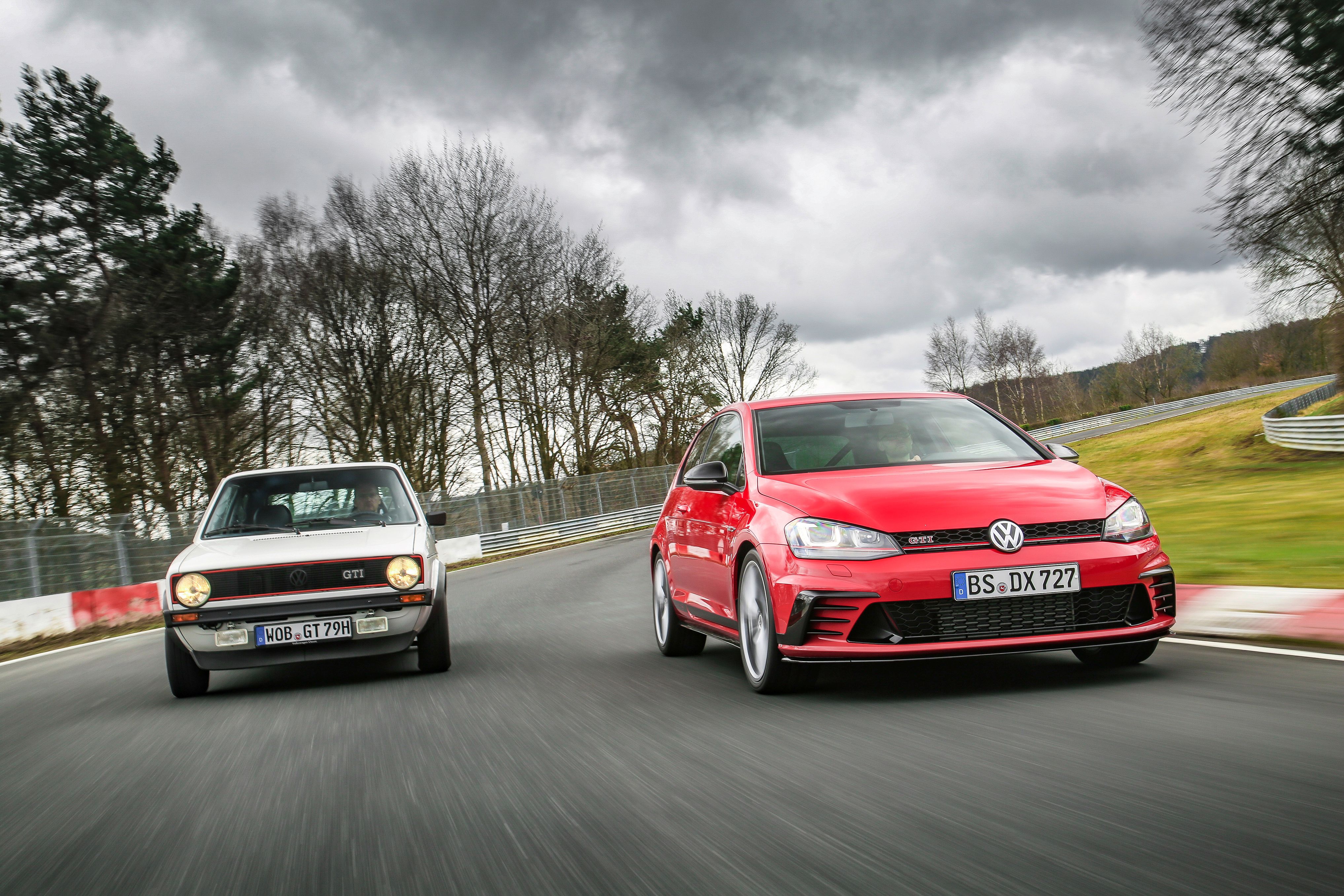Introduced in 1976 and produced continuously over eight generations as of 2021, the Volkswagen Golf GTI is arguably the world's most famous and popular hot hatchback. The Golf GTI is often regarded as the world's first hot hatch and the car that started it all, but it's no true. There are at least four companies that unleashed performance-oriented hatchbacks before Volkswagen and this article will set the record straight.
2021 The Volkswagen Golf GTI Wasn't The First Hot Hatchback By A Long Shot
- Make: Array
- Model: 2021 The Volkswagen Golf GTI Wasn't The First Hot Hatchback By A Long Shot
2020 The Volkswagen Golf GTI Wasn't The First Hot Hatchback By A Long Shot
- Make: Array
- Model: 2020 The Volkswagen Golf GTI Wasn't The First Hot Hatchback By A Long Shot
- [do not use] Vehicle Model: Array
Why is the Volkswagen Golf GTI so popular?
The Golf nameplate goes all the way back to 1974, when Volkswagen launched the body and tiny hatchback as a replacement for the popular but extremely dated Beetle. The latter remained in production in some markets until as late as 2003, but the Golf took over as the brand's leading compact hatchback. The Golf Mk1 became an instant hit so Volkswagen didn't waste time and started working on new versions of the hatchback.
It arrived in 1976 with a 1.6-liter four-cylinder tuned to 108 horsepower and 103 pound-feet of torque and the now iconic red accents on the front grille.
The Golf GTI Mk1 made headlines all over the world and became far more popular than previous attempts at the performance market by smaller carmakers such as Simca and Autobianchi. Volkswagen issued several special-edition versions of the Golf GTI and kept the nameplate in production up until today, spanning over eight different generations. Every generation came with notably more powerful engines and new features. Power increased from 110 horsepower to 137 for the second-gen model and then to 150 horses for the Mk3. Volkswagen took things to a new level with GTI Mk4, rated at 177 horsepower.
The fifth-generation Golf GTI arrived with 197 horsepower, while the sixth-generation hatchback was upgraded to 207 horses in the standard model and 233 horsepower in the 35th Anniversary edition. The Golf GTI Mk7 offered 217 horsepower, but Volkswagen also introduced a Performance Package version with 227 horses. The current, eighth-generation Golf GTI is the most powerful of them all at 242 horsepower. The GTI also helped VW develop even more powerful variants of the Golf, including the VR6, R32, and R. The latest R packs 316 horsepower.
Volkswagen Golf GTI generations
|
First generation |
1.6-liter four-cylinder |
108 HP |
103 LB-FT |
|---|---|---|---|
|
Second generation |
1.6-liter four-cylinder |
137 HP |
124 LB-FT |
|
Third generation |
2.0-liter four-cylinder |
150 HP |
133 LB-FT |
|
Fourth generation |
1.8-liter four-cylinder |
177 HP |
173 LB-FT |
|
Fifth generation |
2.0-liter four-cylinder |
197 HP |
206 LB-FT |
|
Sixth generation |
2.0-liter four-cylinder |
207 HP |
206 LB-FT |
|
Sixth generation 35th Anniversary edition |
2.0-liter four-cylinder |
233 HP |
221 LB-FT |
|
Seventh generation |
2.0-liter four-cylinder |
217 HP |
258 LB-FT |
|
Seventh generation Performance Package |
2.0-liter four-cylinder |
227 HP |
258 LB-FT |
|
Eighth-generation |
2.0-liter four-cylinder |
242 HP |
273 Lb-FT |
The Volkswagen Golf GTI wasn't the first hot-hatchback
Although it's the most popular and recognizable hot hatchback out there, the Golf GTI wasn't the first of its kind. There are at least three performance-oriented hatchbacks that hit the market before the GTI did.
Renalt R5 Alpine specifications
|
Engine |
1.4-liter four-cylinder |
|---|---|
|
Horsepower |
92 HP |
|
Torque |
84 LB-FT |
|
0 to 62 mph |
8.9 seconds |
|
Top Speed |
109 mph |
But the Renault 5 Alpine wasn't the first hot-hatchback either. Some credit another French automaker for creating the first performance hatch. I'm talking about Simca, a small company that in 1970 was incorporated into Chrysler Europe and its remains were sold to PSA in 1978. In 1967, Simca launched one of its most popular models, the 1100. A front-wheel driven hatchback that was also offered as a wagon and a van, the 1100 was fitted with a more powerful in 1974 and given a "Ti" badge. While the standard 1100 came with 58 horsepower, the 1100 Ti had 82 horses at its disposal and needed 12 seconds to hit 62 mph. That may sound awfully slow right now, but it was an impressive figure for an economy hatch back in day, as was its top speed of 105 mph. The Golf GTI, launched two years later, hit 62 mph in 9.2 clicks and a top speed of 113 mph.
Simca 1100 Ti specs
|
Engine |
1.3-liter four-cylinder |
|---|---|
|
Horsepower |
82 HP |
|
Torque |
77 LB-FT |
|
0 to 62 mph |
12 seconds |
|
Top Speed |
105 mph |
But the early days of the hot-hatchback don't stop here. Back in 1971, five years before the Golf GTI came out, Italian automaker Autobianchi teamed up with Abarth to create a more powerful version of its A112. Now don't worry if you don't know who Autobianchi is. Just like Simca, it enjoyed a rather short life from its creation in 1955 until it was merged into Lancia in 1992. The A112, a small hatchback based on the Fiat 128, was its most successful model, produced from 1969 to 1986. Powered by small displacement four-cylinder engines that barely generated 40 horsepower, the A112 was handed over to Abarth in 1971 for a tune up. The result was a 58-horsepower hatchback that was quite nimble given its curb weight of only 1,470 pounds. In 1975, output increased to 70 horses. Not very powerful, but again, it wasn't bad for the era, when small hatchbacks rarely exceeded 50 horsepower.
Autobianchi A112 Abarth specifications
|
Engine |
1.0-liter four-cylinder |
|---|---|
|
Horsepower |
58 HP (70 HP - 1975) |
|
Torque |
63 LB-FT |
|
0 to 62 mph |
11.8 seconds |
|
Top Speed |
99 mph |
And that's not the end of it. Hot-hatchbacks can be traced further back to the 1960s thanks to the iconic Mini Cooper. Yes, the old Mini wasn't exactly powerful. The original car featured a 0.8-liter engine good for only 33 horsepower, but things became a lot more interesting when John Cooper got his hands on the tiny hatchback.
Still not very impressive compared to the Golf GTI (even though this was 1962), but Cooper further upgraded the car over the next couple of years. In 1964, the Mini Cooper 1275 S, fitted with a 1.3-liter four-cylinder, hit the streets with 76 horsepower.
Now before you argue that the Golf GTI had 108 horsepower, 32 more than the Cooper S, were talking about a car that was developed 12 years earlier. What's more, the Mini Cooper was incredibly light, tipping the scales at less than 1,500 pounds. By contrast, the Golf GTI tipped the scales at around 1,830 pounds. This means that they actually had similar power-to-weight ratios. I guess we could say that the 1964 Mini Cooper S was the very first hot-hatchback, but only if we ignore the fact that it didn't actually feature a hatch. Hatchbacks get their name from their rear tailgates, but unlike the other vehicles mentioned here, the Mini had just a small lid in the front fascia instead of a tailgate that included the window.
Mini Cooper 1275 S specifications
|
Engine |
1.3-liter four-cylinder |
|---|---|
|
Horsepower |
76 HP |
|
Torque |
79 LB-FT |
|
0 to 62 mph |
12 seconds |
|
Top Speed |
96 mph |
So why aren't the Renault 5 Alpine, Simca 1000 Ti, Autobianchi A112 Abarth and the Mini Cooper as famous as the Volkswagen Golf GTI? Well, it's not because they weren't powerful enough. The Simca and the Autobianchi were built by much smaller automakers that weren't very popular at the time. The Renault 5 was, in fact, incredibly popular in Europe, but the Alpine model was quickly overshadowed by the Golf GTI, mostly because Volkswagen was a truly global manufacturer.
The Mini Cooper had a different problem. While popular as an affordable car and built and sold across all continents but the Americas it was simply too small to be practical. Volkswagen somehow managed to combine power, speed, practicality, availability, and a relative small sticker into the same package. It turned the Golf GTI into a legend that overshadowed all hot-hatchbacks launched before 1976.
The hot-hatchback storm
The Golf GTI also managed to do what the other hot-hatchbacks before it didn't. It prompted most mainstream automakers to join this niche. As the GTI Mk1 stormed in Europe and North America, carmakers like Ford, Peugeot, Citroen, Lancia, Toyota, and Mazda started working on their own beefed-up hatchbacks. But it took a few years until the Golf GTI had some proper rivals to worry about.
Based on the first-gen hatchback, the 1.6 RS featured a 90-horsepower engine and was capable of top speeds of up to 103 mph. But the Fiesta wasn't nowhere near as powerful as the GTI, so Ford turned to the larger Escort notchback to create a competitor. It first launched the XR3 in 1980, but a more powerful RS 1600i version with 113 horsepower came in 1982. Two years later Ford launched the RS Turbo, powered by a 130-horsepower engine.
But while Ford was the first mainstream brand to jump on the hot-hatch bandwagon after Renault and Volkswagen, it was Sunbeam that took it to a different level. In 1979, the British company, which at the time was owned by Chrysler Europe, commissioned Lotus to breath new life into its rear-wheel drive hatchback. Originally powered by small four-cylinder engines that generated less than 100 horsepower, the beefed-up Sunbeam Lotus featured a larger 2.2-liter unit that generated 150 horsepower and 150 pound-feet of torque.
This was more than any other hatchback at the time and pushed the car from 0 to 62 mph in an amazingly quick 6.6 seconds. Sunbeam Lotus was also a street-spec version of the company's rally car, capable of 250 horsepower. The Sunbeam Lotus was short-lived as the hatchback itself only survived until 1981. Following a takeover by PSA, it was replaced with the Talbot Samba.
Citroen launched the Visa 1000 Pistes with 110 horsepower in 1983, followed by the Visa GTi with 113 horses in 1986. Peugeot also implemented a "GTI" badge on the 205, fitted with a 1.6-liter engine good for 104 horsepower. The GTI was later updated to 1.9-liter mill with 126 horsepower a few years later. Lancia, which was already racing the Delta, introduced the HF Turbo with 128 horsepower in 1984. It was quickly followed by an updated model with 138 horses in 1985 and the HF Integrale with 182 horsepower in 1987.
Mazda joined in in 1985 with a Turbo version of the 323, rated at 138 horsepower, while Honda had introduced the Civic Si with 118 horses in 1984. But while most companies took a mild approach to the hot-hatchback concept, Lancia took things a bit more personal and by the end of the 1980 the Delta Integrale was gaining on the 200-horsepower mark. The Golf GTI was barely making 137 horses.
The 1990s saw the hot-hatchback market gain even more traction as output figures surpassed the 200-horsepower. The 2000s brought new players to the market, with premium carmakers like BMW, Audi, and Mercedes-Benz joining in. While Volkswagen continued to develop the Golf GTI, Ford launched the Focus as a direct competitor and aimed the ST toward the GTI. As the market developed, Ford and Volkswagen produced ST and GTI versions of their smaller hatchbacks, the Fiesta and the Polo. They also created new range-topping models like the Golf R and Focus RS, both capable of more than 300 horsepower.
Nowadays, we also have the Mercedes-AMG A45, the BMW M135i, and the Audi RS3. Honda is offering the Civic Type R, while Toyota is selling the beefed-up GR Yaris. Hyundai, through its N division, created high-performance versions of the i20, i30, and Veloster. The list is longer than ever and we haven't included many modern hot-hatches.
America's take on the hot-hatchback
Hatchbacks had become somewhat popular in the U.S. in the 1960s and the late 1970s saw a few higher performance models break cover in America a few years before the Golf GTI was imported. The Ford Pinto is one of the more iconic models, but it wasn't exactly hot. Ford's hatchback hit the 100-horsepower mark in 1971 thanks to a 2.0-liter four-cylinder, while the 2.8-liter V-6 added in 1975 was rated at 103 horses.
One year later, AMC introduced a V-8 with 150 horsepower and for many years it remained the most powerful U.S.-built hatchback. The larger AMC Pacer was also offered with a 5.0-liter V-8 engine rated at 150 horsepower.
Dodge joined this niche in 1977 with the Omni. It was based on the Euro-spec Chrysler Horizon and became the first FWD economy car built in the U.S. The regular Omni was capable of a little more than 90 horsepower in range-topping spec, but Dodge rolled out the Omni GHL with 146 horsepower in 1984. Modified by Carroll Shelby, the Omni GLH was followed by the Shelby GLHS, upgraded to 175 horsepower, in 1986. Chevrolet also built a handful of hatchbacks, including the Citation, Monza, and Chevette. The Citation topped out at 135 horsepower in 1981, while the Monza featured a 145-horsepower V-8 in the late 1970s.
But as far as sales go, hot-hatchbacks remained an import car affair in the U.S. thanks to high-performance versions of the Volkswagen Golf, Ford Focus, and Honda Civic.

